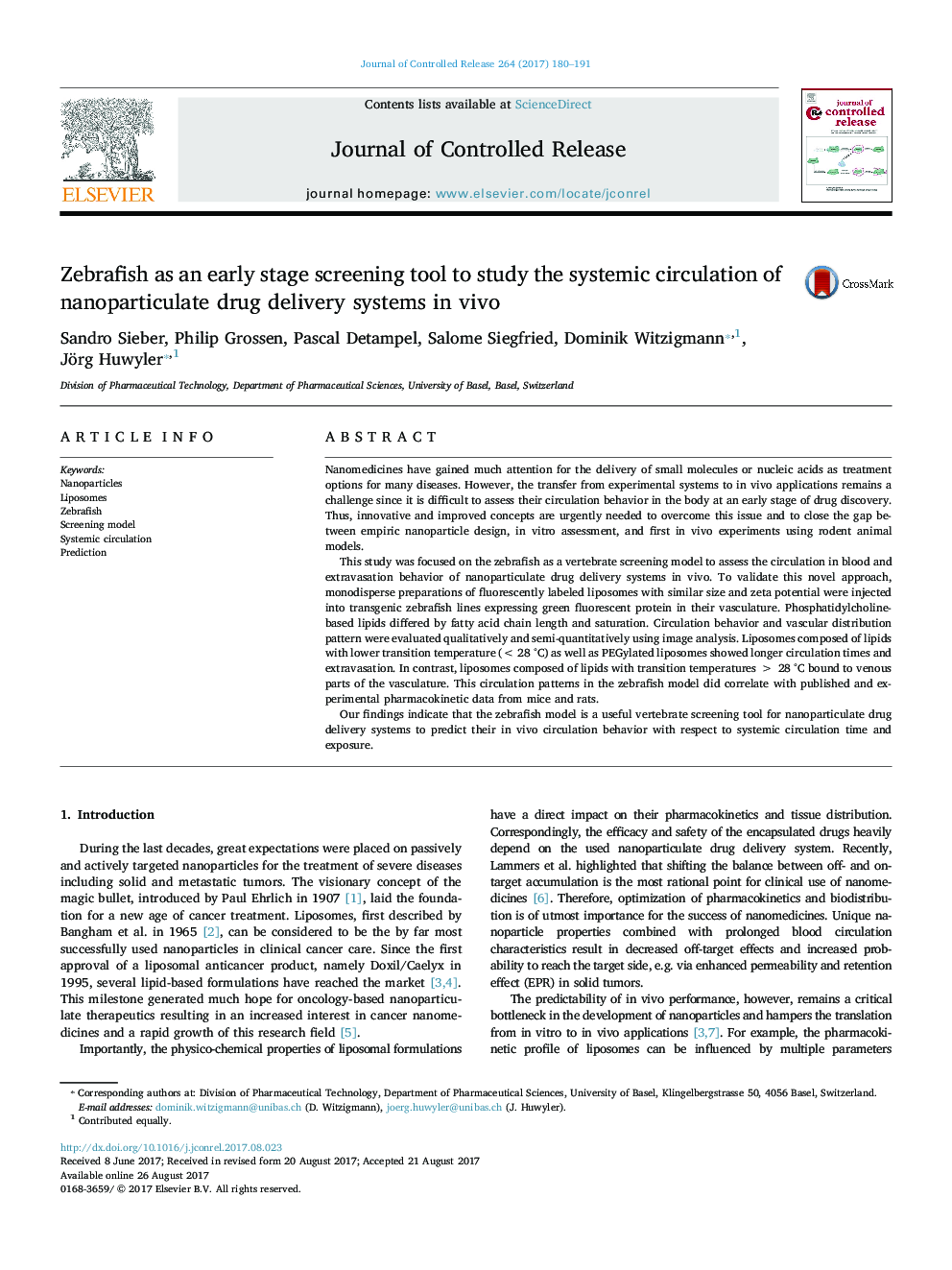| Article ID | Journal | Published Year | Pages | File Type |
|---|---|---|---|---|
| 5433367 | Journal of Controlled Release | 2017 | 12 Pages |
Nanomedicines have gained much attention for the delivery of small molecules or nucleic acids as treatment options for many diseases. However, the transfer from experimental systems to in vivo applications remains a challenge since it is difficult to assess their circulation behavior in the body at an early stage of drug discovery. Thus, innovative and improved concepts are urgently needed to overcome this issue and to close the gap between empiric nanoparticle design, in vitro assessment, and first in vivo experiments using rodent animal models.This study was focused on the zebrafish as a vertebrate screening model to assess the circulation in blood and extravasation behavior of nanoparticulate drug delivery systems in vivo. To validate this novel approach, monodisperse preparations of fluorescently labeled liposomes with similar size and zeta potential were injected into transgenic zebrafish lines expressing green fluorescent protein in their vasculature. Phosphatidylcholine-based lipids differed by fatty acid chain length and saturation. Circulation behavior and vascular distribution pattern were evaluated qualitatively and semi-quantitatively using image analysis. Liposomes composed of lipids with lower transition temperature (< 28 °C) as well as PEGylated liposomes showed longer circulation times and extravasation. In contrast, liposomes composed of lipids with transition temperatures > 28 °C bound to venous parts of the vasculature. This circulation patterns in the zebrafish model did correlate with published and experimental pharmacokinetic data from mice and rats.Our findings indicate that the zebrafish model is a useful vertebrate screening tool for nanoparticulate drug delivery systems to predict their in vivo circulation behavior with respect to systemic circulation time and exposure.
Graphical abstractDownload high-res image (261KB)Download full-size image
